Bhutan Dzongs Interesting Facts
What is Dzong in Bhutan? - Administrative Centers and Attractions
The dzongs of Bhutan are serving as a religious monastery and an administrative center. Dzongs are an integral part of Bhutanese culture and are considered important symbols of the country's heritage and identity.
The term "dzong" translates to "fortress" or "castle" in the Bhutanese language. These structures were traditionally built on strategic locations like hilltops or at the confluence of rivers, providing natural defense and commanding views of the surrounding areas.
The construction of dzongs in Bhutan dates back to the 17th century. They were initially built as def ensive fortresses during periods of regional conflict. Over time, dzongs evolved to include religious and administrative functions, becoming centers where both secular and religious affairs were conducted.
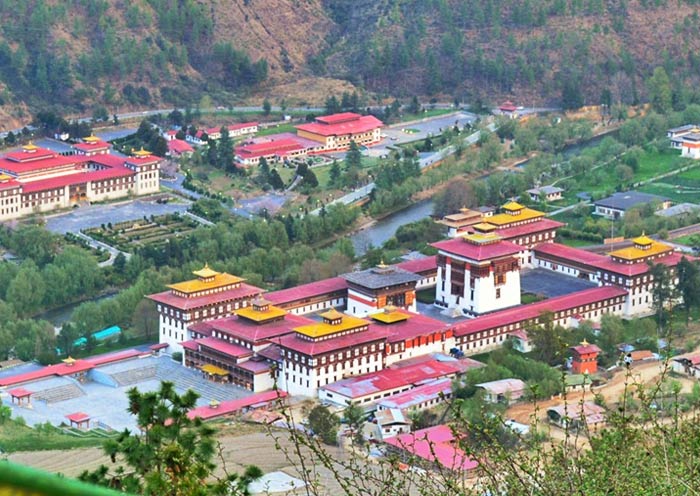

What to See in Bhutan Dzongs?
For tourists visiting Bhutan, dzongs offer a window into the country's rich history, culture, and architectural grandeur. Here are some highlights of what to see when visiting Bhutanese dzongs:
- Architecture: The architecture of dzongs is a remarkable blend of functionality, aesthetics, and cultural symbolism. Dzongs typically consist of several buildings and courtyards surrounded by high walls. The complex incorporates architectural elements such as large central towers, fortified walls, watchtowers, and intricate woodwork and carvings.
- Wall Paintings and Murals: The walls of many dzongs are adorned with intricate paintings and murals depicting religious stories, legends, and historical events. These artistic creations are a testament to the rich cultural heritage of Bhutan and provide insight into the country's traditions and beliefs.
- Tshechu Festivals: If your visit coincides with a tshechu festival, attending the celebrations at the dzong is a must. Tshechus are vibrant events featuring masked dances, religious performances, and cultural festivities. It's an opportunity to witness Bhutanese traditions come to life and immerse yourself in the joyful atmosphere.
- Museum and Exhibitions: Some dzongs have museums or exhibition halls that showcase artifacts, religious relics, traditional costumes, and historical artifacts. These displays offer a deeper understanding of Bhutanese history, culture, and religious traditions.
20 Dzongs of Bhutan - All Bhutan Dzongs
| Dzongkhag | Location | Dzongkhag | Location |
|---|---|---|---|
| Punakha Dzong | Punakha, Central Bhutan | Samdrup Jongkhar Dzong | Samdrup Jongkhar, Eastern Bhutan |
| Paro Rinpung Dzong | Paro, Western Bhutan | Lhuentse Dzong | Lhuentse, Eastern Bhutan |
| Trongsa Dzong | Trongsa, Southern Bhutan | Gasa Dzong | Gasa, Central Bhutan |
| Wangdue Phodrang Dzong | Wangdue Phodrang, Central Bhutan | Dagana Dzong | Dagana, Central Bhutan |
| Tashichho Dzong | Thimphu, Western Bhutan | Zhemgang Dzong | Zhemgang, Southern Bhutan |
| Trashigang Dzong | Trashigang, Eastern Bhutan | Pema Gatshel Dzong | Pema Gatshel, Eastern Bhutan |
| Haa Dzong | Haa, Western Bhutan | Chukha Dzong | Chukha, Western Bhutan |
| Jakar Dzong | Bumthang, Southern Bhutan | Samtse Dzong | Samtse, Western Bhutan |
| Mongar Dzong | Mongar, Eastern Bhutan | Trashi Yangtse Dzong | Trashi Yangtse, Eastern Bhutan |
| Tsirang Dzong | Tsirang, Central Bhutan | Sarpang Dzong | Sarpang, Southern Bhutan |
Bhutan Dzongs on Bhutan Tourist Map

Check more Maps of Bhutan in Bhutan Tourist Maps.
Punakha Dzong - Most Beautiful Dzong in Bhutan
Location: Punakha Dzong is situated at the confluence of the Pho Chhu (male) and Mo Chhu (female) rivers in Punakha district, approximately 72 kilometers (45 miles) northeast of the capital city, Thimphu.
Punakha Dzong, also known as the "Palace of Great Happiness," is widely regarded as one of the most beautiful dzongs in Bhutan. Punakha Dzong was the second dzong to be built in Bhutan and served as the country's capital until 1955. It has witnessed many significant events, including the coronations of Bhutan's kings and the wedding of the King.
Highlights of Punakha Dzong
- Jacaranda Trees: During the spring season in May, Punakha Dzong becomes even more enchanting when the surrounding fields burst into bloom with vibrant jacaranda trees and rhododendrons.
- Grand Tree within the Courtyard: Within the dzong's courtyards, a majestic and ancient tree stands, providing shade and contributing to the serene ambiance of the place.
- Suspension Bridge: The picturesque Punakha Suspension Bridge connects Punakha Dzong to the mainland, offering visitors a unique perspective of the dzong and the surrounding natural beauty.
- Punakha Tshechu Festival: The annual Punakha Tshechu is a vibrant religious festival held at the dzong in late February, featuring traditional mask dances, music, and cultural performances, attracting locals and tourists alike.
- Punakha River Rafting: Visitors to Punakha also have the opportunity to enjoy thrilling river rafting on the nearby Mo Chhu River, providing an adventurous experience amidst the natural beauty of the region.


Tashichho Dzong (Thimphu) - Capital Dzong in Bhutan
Location: Tashichho Dzong is situated on the western banks of the Wang Chhu River, at the northern end of Thimphu Valley.
Tashichho Dzong stands as a significant cultural, religious, and administrative landmark in Bhutan. Its architectural splendor, combined with its role as the seat of government and a center for religious activities, makes it an iconic and revered site in Thimphu.
Highlights of Tashichho Dzong
- Administrative Center: Tashichho Dzong serves as the seat of the Bhutanese government, housing various administrative offices, including the throne room and offices of the King and ministers. It plays a crucial role in the governance of the country.
- Religious Significance: Tashichho Dzong is an important religious center, housing temples and shrines. The main temple within the dzong is adorned with intricate religious artworks and serves as a place of worship and meditation.
- Thimphu Tshechu: The annual Thimphu Tshechu, a vibrant religious festival, takes place within the courtyards of Tashichho Dzong in September. It features masked dances, traditional music, and cultural performances, providing a glimpse into Bhutanese traditions and customs.
- Flag Lowering Ceremony: This ceremony is a daily military tradition that usually takes place in the evening. The flag-lowering ceremony is a solemn and respectful event typically carried out by the Royal Bhutan Army.
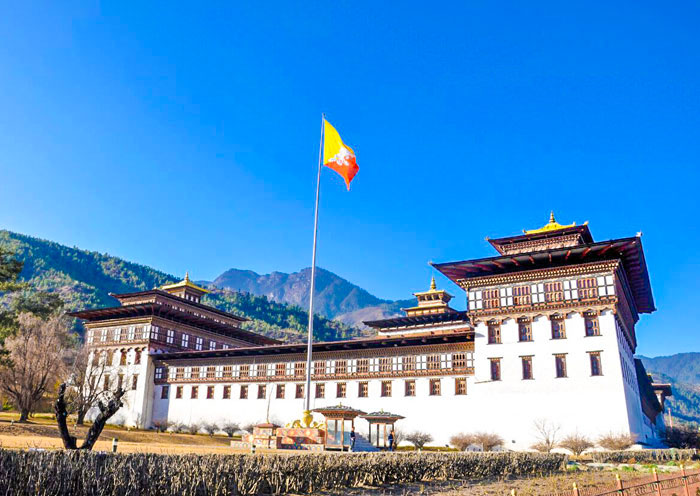

Paro Dzong - First Dzong You Meet
Location: Paro Dzong is situated on the western banks of the Paro Chhu River in the Paro Valley, about 2 kilometers (1.2 miles) north of Paro town.
Paro Dzong, also known as Rinpung Dzong, is a historic fortress and monastery located in the Paro Valley of Bhutan. "Rinpung" means "Heap of Jewels," which signifies the dzong's importance and the treasures it holds.
Highlights of Paro Dzong
- Ta Dzong (National Museum): Adjacent to Paro Dzong is the Ta Dzong, which serves as the National Museum of Bhutan, located in the watchtower above the dzong. It houses a vast collection of artifacts, religious relics, traditional artwork, and historical objects that offer insights into the culture, history, and traditions of Bhutan.
- Paro Tshechu Festival: Paro Dzong is the venue for the annual Paro Tsechu in March, one of the most popular religious festivals in Bhutan. The festival features mesmerizing mask dances, religious rituals, and vibrant celebrations that attract both locals and tourists. It is a time of joy, devotion, and cultural heritage.
- Scenic Location: Paro Dzong is situated in a picturesque location, perched on a hillside overlooking the Paro Valley. The surrounding natural beauty, with panoramic views of mountains and lush greenery, adds to the enchantment of the dzong.
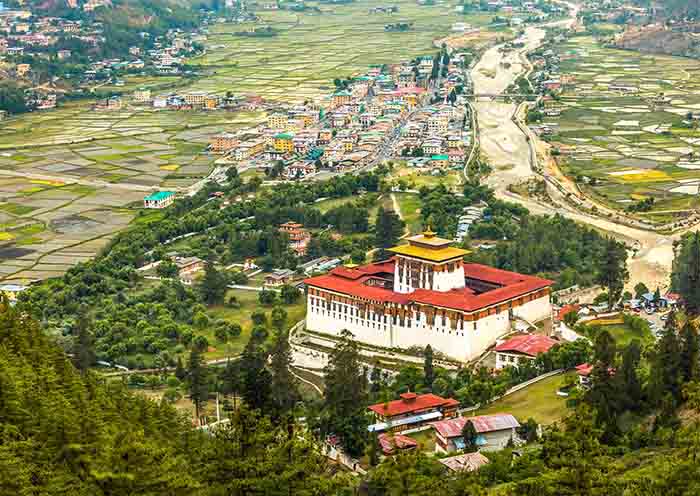

Trongsa Dzong - Long and Majestic
Location: Trongsa Dzong is perched on a ridge overlooking the Mangde Chhu River in the Trongsa district, situated in the central part of Bhutan. It is strategically positioned at the crossroads between eastern and western Bhutan.
Trongsa Dzong has a rich history and served as the ancestral home of the Wangchuck dynasty, the current royal family of Bhutan. It is traditionally the place where the crown prince serves as governor before ascending the throne. Trongsa Dzong was the seat of power for the first and second kings of Bhutan and played a pivotal role in shaping the country's history.
Highlights of Trongsa Dzong
- Architectural Grandeur: Trongsa Dzong is a majestic fortress that stands on a commanding hilltop overlooking the Mangde Chhu River. It is the largest dzong fortress in Bhutan, with a complex series of structures interconnected by a maze of courtyards, passageways, and corridors.
- Tower of Trongsa Museum: The Tower of Trongsa Museum, located in a watchtower above the dzong, provides insights into the history of Bhutan's monarchs and features religious and cultural artifacts.
- Festivals: Trongsa Dzong comes alive during festive occasions, particularly during the annual Trongsa Tshechu in September. This vibrant religious festival features masked dances, traditional music, and religious ceremonies, attracting both locals and tourists to witness the cultural extravaganza.
- Panoramic Views: From Trongsa Dzong, visitors can enjoy breathtaking panoramic views of the surrounding landscape. The vantage point offers stunning vistas of the Trongsa town, the Mangde Chhu River valley, and the lush mountains that stretch into the distance.
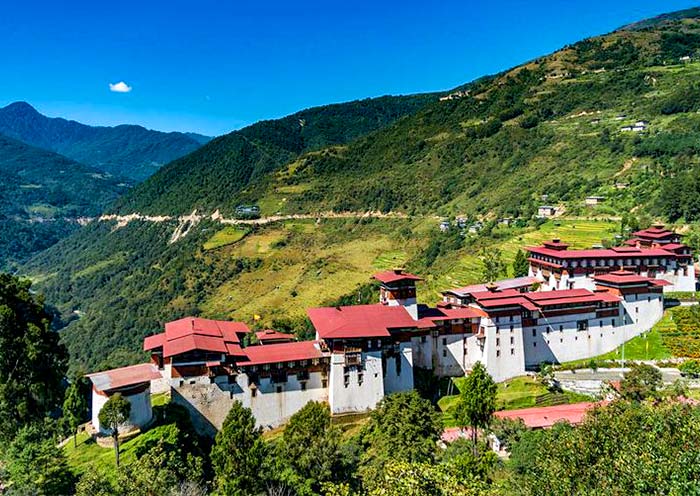

Jakar Dzong (Bumthang) - Bird with Wings
Location: Jakar Dzong is situated on a ridge overlooking the Chokhor Valley in the town of Jakar, which is often referred to as the "Switzerland of Bhutan." It is located in the central part of Bhutan and is part of the Bumthang Valley, known for its cultural and religious significance.
Jakar Dzong, also known as the "Castle of the White Bird," is said to have been founded on the site where a white bird (a dove) landed in the 16th century. Positioned on a ridge above Jakar town, the dzong offers panoramic views of the surrounding valley, making it a stunning location for photography and sightseeing.
Highlight of Jakar Dzong
- Jakar Tshechu Festival: The annual Jakar Tshechu is a vibrant religious festival held at Jakar Dzong in October. It showcases colorful mask dances, traditional music performances, and religious rituals. The festival attracts locals and tourists, offering an immersive cultural experience.
- Surrounding Attractions: In addition to the dzong, the town of Jakar and the Bumthang Valley offer several other attractions. Visitors can explore nearby monasteries, temples, and sacred sites, as well as engage in outdoor activities like hiking and birdwatching.

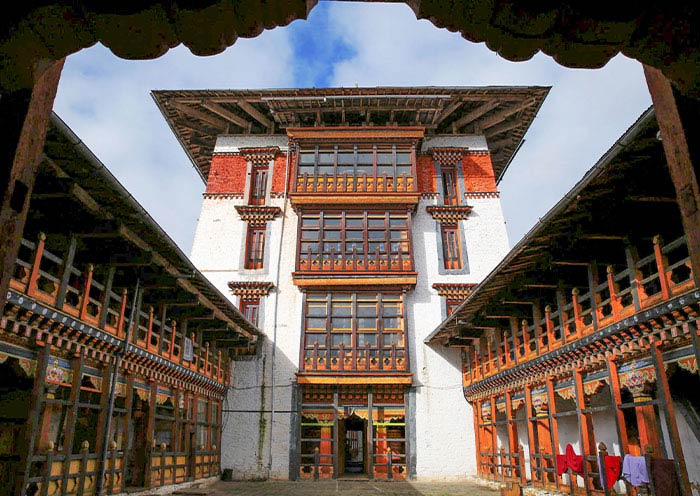
Haa Dzong - Distinctive in Haa Valley
Location: Haa Dzong is located in the Haa District of Bhutan, about 60 kilometers from Paro and 120 kilometers from Thimphu. The dzong is situated on a hill overlooking the Haa Valley, and is surrounded by mountains and forests.
Haa Dzong, also known as Wangchuk Lo Dzong, was originally built in 1895 and rebuilt in 1915 after it was destroyed by a fire. The rebuilt dzong is a large, imposing structure, with a five-story central tower. The walls of the dzong are decorated with murals depicting Buddhist deities and scenes from Buddhist history. Haa Dzong is a popular tourist destination, and is a must-see for anyone visiting the Haa Valley.
Highlights of Haa Dzong
Scenic Views: From the dzong's vantage point, visitors can enjoy breathtaking panoramic views of the Haa Valley, lush forests, and snow-capped mountains.
Sacred Relics: Haa Dzong houses several revered Buddhist relics, including a statue of the Buddha Shakyamuni, a statue of Guru Rinpoche, the founder of Tibetan Buddhism, and a collection of sacred scriptures.
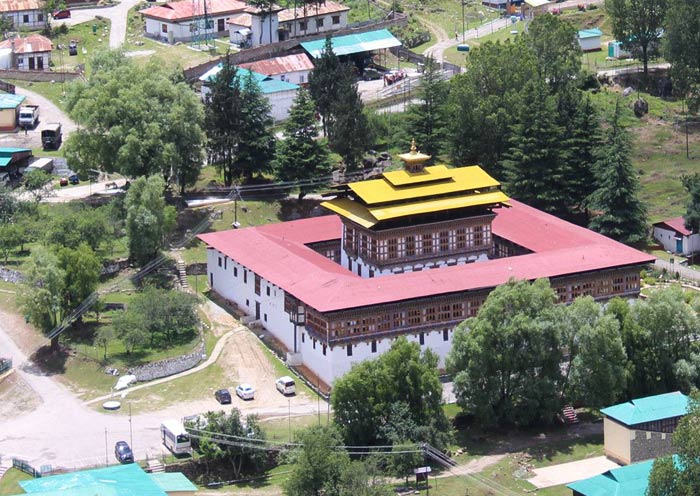
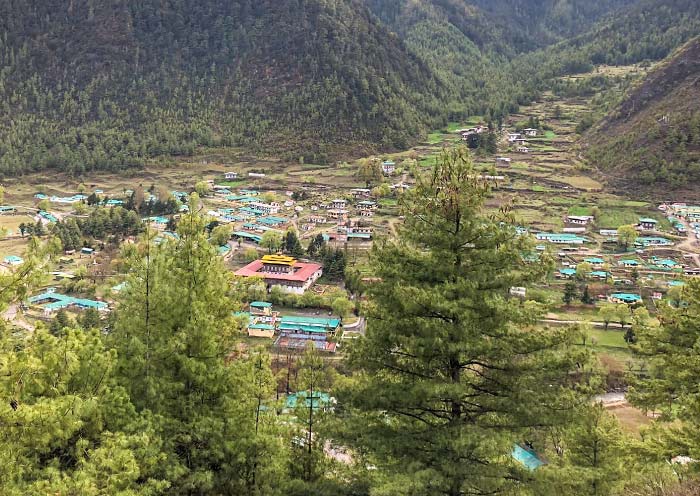
Tips When Visiting Bhutan Dzongs
Visiting the dzongs of Bhutan is a unique experience that allows you to immerse yourself in the country's deep cultural and historical traditions. Here are some tips to ensure a respectful and enjoyable visit:
Dress Code: Both men and women are required to wear clothing that covers their shoulders, arms, and knees. It's advisable to carry a jacket or shawl to cover up if necessary.
Photography: Always ask for permission before taking photographs inside the dzongs, especially during religious ceremonies and in sacred areas. Some areas may have restrictions on photography, so it's best to be respectful and follow the guidance of the local authorities.
Footwear: Most dzongs require visitors to remove their shoes before entering. Wear comfortable and easily removable footwear, such as sandals or slip-on shoes, to make the process more convenient.
Silence and Respect: Maintain a quiet and respectful demeanor while inside the dzongs. These places hold religious and cultural significance, so it's important to behave appropriately and not disturb the peaceful environment.
Follow Instructions: Pay attention to any instructions given by the guides or authorities within the dzongs. They will provide valuable information and ensure that you have a safe and meaningful visit.
Monastic Etiquette: If you encounter monks or nuns within the dzongs, show respect by refraining from touching them or their robes. If you wish to interact or take photographs with them, it's polite to ask for their consent first.
Timings and Festivals: Check the visiting hours of the dzongs and plan your visit accordingly. Some dzongs may have limited access or restricted hours. Additionally, if possible, try to time your visit with any festivals or events happening at the Dzong for a more immersive experience.
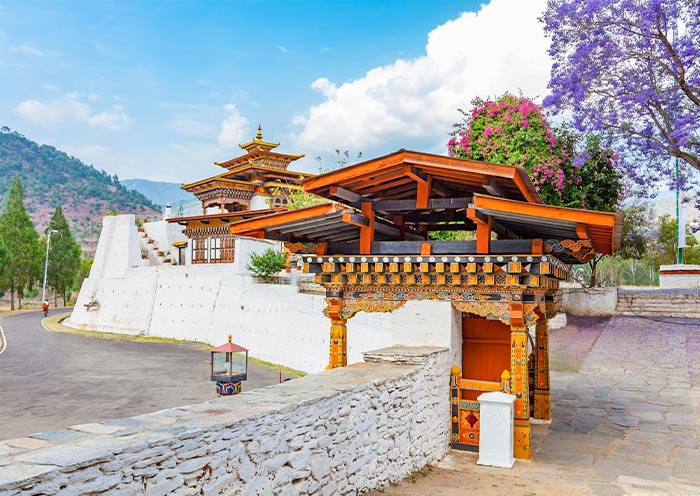

Explore Bhutan with Local-based Asia Odyssey Travel
Asia Odyssey Travel is a local-based travel agency that offers Bhutan Group Tours and customized tours in Bhutan. Our team of experienced local guides ensures that you have an immersive and insightful journey, sharing our deep understanding of Bhutanese culture, history, and spirituality.
Bhutan, known as the "Land of the Thunder Dragon," is a captivating destination with its stunning landscapes, ancient monasteries, and rich Buddhist traditions. Asia Odyssey Travel can help you discover the highlights of Bhutan, including Paro, Punakha, Thimphu, Bumthang, and Gangtey.
Whether you're interested in trekking through pristine mountain trails, participating in vibrant festivals, or exploring remote villages, Asia Odyssey Travel can tailor Bhutan Trekking Tour and Bhutan Festival Tour itineraries to suit your preferences.
Embark on a memorable journey through Bhutan with Asia Odyssey Travel and immerse yourself in the enchanting beauty and traditions of this unique Himalaya kingdom.
If you have any questions about this article, please contact us by submitting the following form and we'll immediately get back to you.















